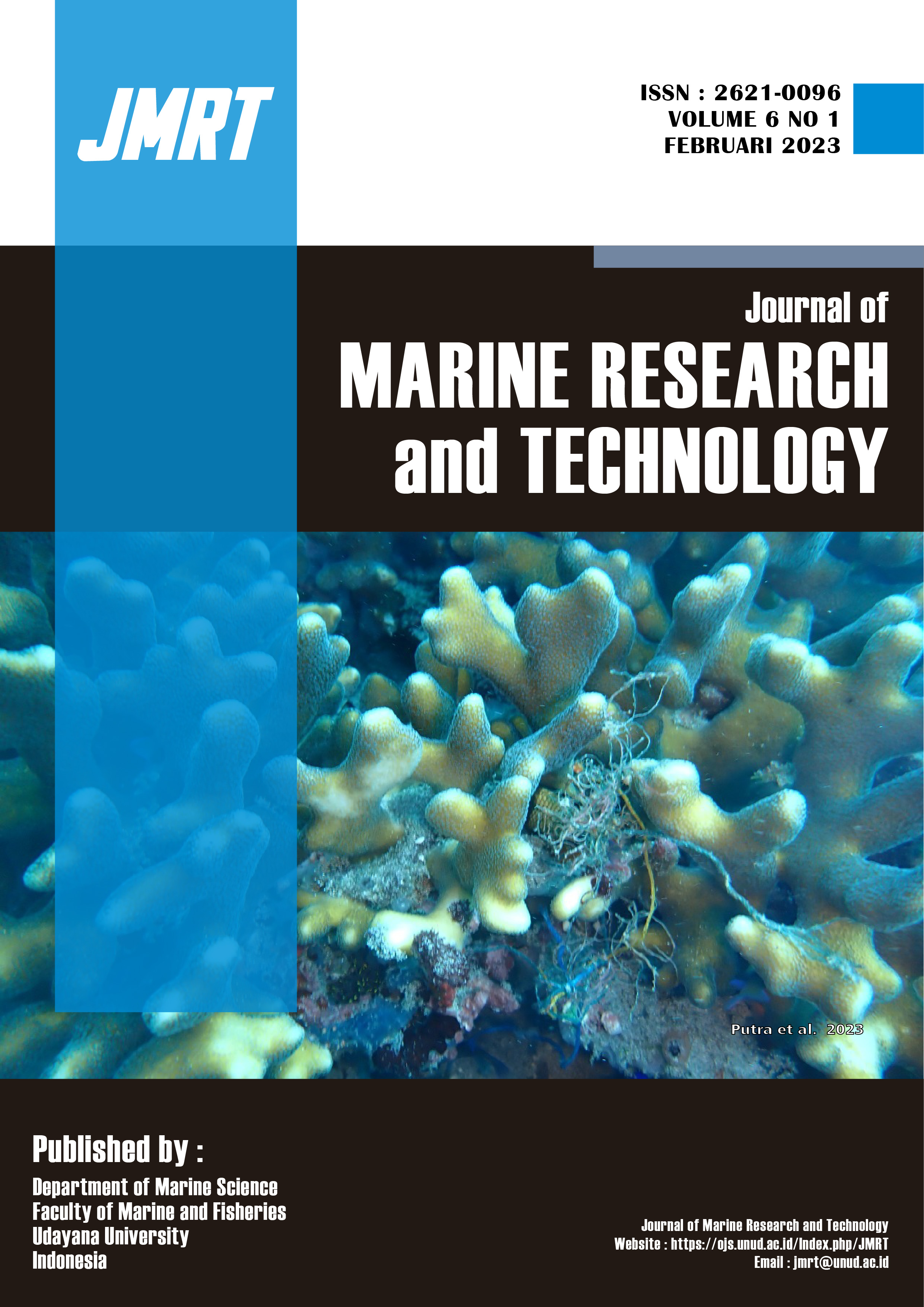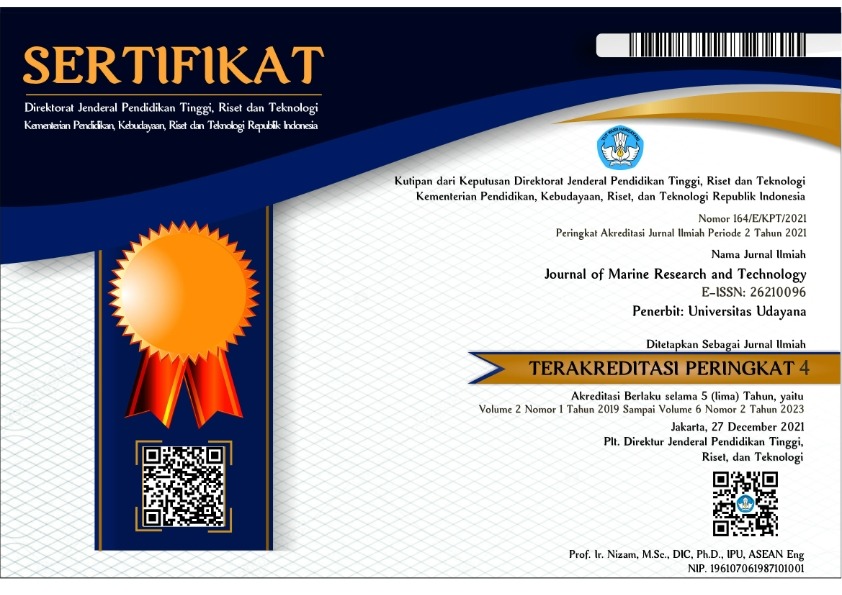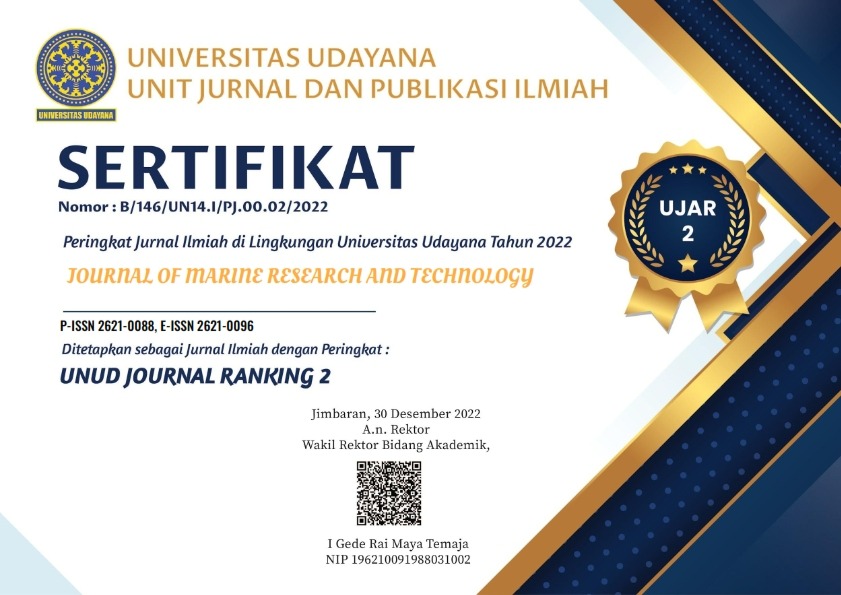Kelimpahan dan Jenis Mikroplastik pada Sedimen Lamun di Perairan Nusa Dua, Bali
Abundance; Microplastic; Sediment; Seagrass ;Nusa Dua
Abstract
The Indonesian archipelago, especially Bali, has extensive coastline and marine waters. However, it is undeniable that some of these waters contain much plastic waste. Nusa Dua waters are located in the Bali Province area with many complex activities, ranging from port activities, water sports, tourism, restaurants, hotels, fishing activities, and others, so they have a high potential for plastic waste pollution. Plastic waste that floats in the ocean will degrade and become small debris called microplastics. Marine plastic debris is divided into several varieties based on size. It is called microplastic for those less than 5 millimeters in length; for those above 5 mm and up to 25 mm, it is mesoplastic. This study aimed to determine the abundance and types of microplastics found in Nusa Dua. This research was conducted in November-Desember 2021. Sampling was carried out in situ with the simple random sampling method of 400 grams of each sample at ten stations. Sediment sampling was carried out using a shovel. Then the ex-situ processing was carried out by drying wet sediment, weighing dry sediment, density separation, filtering, and visual sorting. The results showed that the seagrass sediments in Nusa Dua waters were contaminated with microplastic. Four types of microplastic were found: fragment, fiber/filament, film/soft plastic, and foam. As many as 17 particles fragment the type of microplastic that dominates. The dominant color is blue. The highest total abundance of microplastics was found at station 6, as much as 35.1 particles/kg with different densities of seagrass species at each station. The density of seagrass species itself reaches the range of 1.2 stands/m2
Downloads
Copyright Notice
The copyright to this article is transferred to Journal of Marine Research and Technology (JMRT). The copyright transfer covers the exclusive right and license to reproduce, publish, distribute and archive the article in all forms and media of expression now known or developed in the future, including reprints, translations, photographic reproductions, microform, electronic form (offline, online) or any other reproductions of similar nature.






